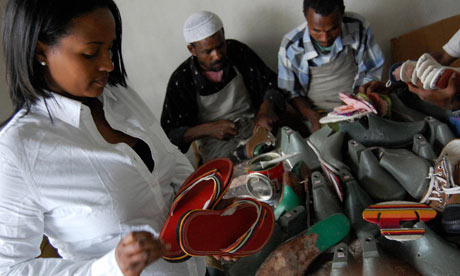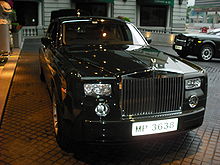倫敦意外擊敗巴黎、取得2012奧運舉辦權之時,股市飛漲,民眾也歡欣鼓舞;但英國是個喜愛自嘲的國家,就算是在05年成功取得舉辦權之時,部分評論家也開始質疑賽事成本和交通問題。
這次奧運究竟會不會成功?答案是會。1996年亞特蘭大奧運是場後勤和保安惡夢,但也展現了人類的無窮意志力;簡單來說,一旦運動員步上賽場,奧運會就會自行運作下去了。
不過,倫敦奧運會也給了自己更大的挑戰。2000年雪黎奧運的許多賽事是在郊區舉行,倫敦奧運卻有不少賽場位於市中心一帶。利用現有賽場的目的在於減低成本,但也讓計畫更為複雜混亂;大量觀眾會利用大眾運輸前往賽場,但倫敦的大眾運輸原本就已經擁擠不堪。
1960年至今,每場奧運都預算超支,倫敦奧運管理當局驕傲地表示支出並未超出預算,但那只是因為預算在07年增加了將近3倍。
每次奧運結束後,都會留下一些巨大、空曠又昂貴的賽場。有些人希望奧運可以改善城市和國家的形象,但倫敦已經是全歐洲旅客最多的城市,也是全球金融重鎮,其目標自然不同。
倫敦奧運希望能激勵英國年輕一代,但目前英國人似乎並沒有變得比較喜愛運動。奧運組織者希望能藉此重振東倫敦,但重新開發奧運園區,不太可能讓整個地區都受益。
在此同時,英國經濟則越來越讓人憂心。贏得舉辦權的英國既富有又自信,現在的英國則搖搖欲墜;奧運會也從全球化城市的慶典,轉而成為亟需成長的經濟體所祭出的行銷手段。(黃維德譯)
不過,倫敦奧運會也給了自己更大的挑戰。2000年雪黎奧運的許多賽事是在郊區舉行,倫敦奧運卻有不少賽場位於市中心一帶。利用現有賽場的目的在於減低成本,但也讓計畫更為複雜混亂;大量觀眾會利用大眾運輸前往賽場,但倫敦的大眾運輸原本就已經擁擠不堪。
1960年至今,每場奧運都預算超支,倫敦奧運管理當局驕傲地表示支出並未超出預算,但那只是因為預算在07年增加了將近3倍。
每次奧運結束後,都會留下一些巨大、空曠又昂貴的賽場。有些人希望奧運可以改善城市和國家的形象,但倫敦已經是全歐洲旅客最多的城市,也是全球金融重鎮,其目標自然不同。
倫敦奧運希望能激勵英國年輕一代,但目前英國人似乎並沒有變得比較喜愛運動。奧運組織者希望能藉此重振東倫敦,但重新開發奧運園區,不太可能讓整個地區都受益。
在此同時,英國經濟則越來越讓人憂心。贏得舉辦權的英國既富有又自信,現在的英國則搖搖欲墜;奧運會也從全球化城市的慶典,轉而成為亟需成長的經濟體所祭出的行銷手段。(黃維德譯)
The London model
The Olympics
By The Economist
From The Economist
Published: July 31, 2012
From The Economist
Published: July 31, 2012
The city is trying to pull off a mightily ambitious games.
Jul 28th 2012 | from the print edition
WHEN London unexpectedly beat Paris in the competition to hold the 2012 Olympic games, crowds cheered, the stock market soared and politicians congratulated themselves. But Britain is a nation of self-deprecating cynics. Even on the day of the successful bid in 2005, some commentators were carping about the cost of the games and the likelihood of disruption and transport problems. A rather good BBC sitcom, "Twenty Twelve", pokes fun at bureaucratic absurdities and snafus: in the final episode, aired on July 24th, the Olympic Deliverance Commission realises that the opening ceremony's fireworks will trigger the surface-to-air missiles that guard the site. The solution? Virtual fireworks.
The recurring question is whether the games will come off. The answer is that, barring a non-humorous calamity, they will. The 1996 Atlanta games was a logistical and security nightmare, yet the city staged a showcase of extraordinary human endeavour. At each games someone runs faster, jumps higher or rows or cycles harder than anyone has ever done before. Once the athletes are on the field, the Olympics more-or-less runs itself. (Though North Korean footballers were greeted with the South's flag in an early match.)
London has nevertheless set itself a more severe challenge than almost any other host. Sydney, which held the games in 2000, staged many events on one suburban site; its population was half of London's now. In Beijing, four years ago, the government commanded its citizens to stop driving or firing up factories; it destroyed houses for highways and built the world's largest airport terminal with no debate. Londoners have repeatedly been told to stay at home, but most will probably carry on regardless. Many sporting venues are in the heart of the city as well as dispersed around it: the stands that will seat beach volleyball spectators loom above the garden of the prime minister's residence at 10 Downing Street.
Game on
Using existing arenas such as Lord's cricket ground (for archery) and Wimbledon (for tennis) was supposed to reduce the bill for the London games. It also makes the project complicated and disruptive. An unprecedented share of games-goers will travel to events by public transport, a system already bulging with local passengers. So-called "Zil lanes", 30 miles of roadway reserved for Olympic athletes, officials, sponsors and journalists, have provoked protests and the occasional delay. Any stumble in London's "public-transport games" will quickly be seized upon.
The fact that transport remains such a big question hints at how much else has been achieved, and how smoothly. Seven years on from the bid, one of the largest post-war public works projects has been delivered. A shabby part of east London has been prettified: the site of the main Olympic Park was until recently rough scrubland containing piles of rotting fridges and a dirty river. The army and police have stepped in to fill a gap left by G4S, a contractor which failed to provide enough security staff. Potholes have been filled and transport links upgraded and extended. The capital is adorned with pink signs directing spectators to events, as well as giant union flags handily recycled from the queen's Jubilee.
All this comes at a price—since 1960 every games has overshot its budget. The Olympic Delivery Authority boasts that it has brought the games in under its allotted £9.3 billion ($14.4 billion), yet it did so only because the original budget was nearly quadrupled in 2007. As with other Olympics, it is hard to quantify the opportunity cost of transport schemes that would not otherwise have been built, or a fancy velodrome that will struggle to recoup its original investment.
And what comes after is a running problem. Each host city promises a legacy; each is left with at least some large, empty, costly structures. The hope is that hosting the games will improve a city's, and a country's, image. Barcelona, which hosted the games in 1992, and Beijing used the Olympics to launch their own ambitions on the world stage. Since London is already the most visited city in Europe and a financial and business centre, its aims are different. And they have evolved.
London's bid highlighted the inspirational bequest to a generation of British youngsters. The capital is filled with injunctions to "Be part of it" and "Inspire a generation", although there are few signs that the nation is becoming fitter or more sporty, as had been hoped. Organisers also pledged to regenerate the poor East End of London with jobs and homes. The shopping is certainly better now, thanks to the arrival of a swanky new retail centre. But the redevelopment of the Olympic Park is unlikely to enrich the whole area. And the park's future remains uncertain. Plans for a technology cluster rely on attracting small, young firms that are hard to corral; proposals for new housing are still under way. Transport may help east London more than anything else: Stratford is now even better connected.
Meanwhile the economy has become more worrisome. The Britain that was awarded the games was rich and confident. The current one is ailing and needy. As The Economist went to press, the prime minister was preparing to chivvy a conference of business folk to work harder at exporting beyond sickly Europe to faster-growing emerging markets. The Olympics has turned from a celebration of a global city to a marketing pitch from an economy desperate for growth. Ludicrously expensive, administratively Byzantine and freighted with expectations, it nevertheless promises to be a popular party.
from the print edition | Britain
©The Economist Newspaper Limited 2012
Jul 28th 2012 | from the print edition
WHEN London unexpectedly beat Paris in the competition to hold the 2012 Olympic games, crowds cheered, the stock market soared and politicians congratulated themselves. But Britain is a nation of self-deprecating cynics. Even on the day of the successful bid in 2005, some commentators were carping about the cost of the games and the likelihood of disruption and transport problems. A rather good BBC sitcom, "Twenty Twelve", pokes fun at bureaucratic absurdities and snafus: in the final episode, aired on July 24th, the Olympic Deliverance Commission realises that the opening ceremony's fireworks will trigger the surface-to-air missiles that guard the site. The solution? Virtual fireworks.
The recurring question is whether the games will come off. The answer is that, barring a non-humorous calamity, they will. The 1996 Atlanta games was a logistical and security nightmare, yet the city staged a showcase of extraordinary human endeavour. At each games someone runs faster, jumps higher or rows or cycles harder than anyone has ever done before. Once the athletes are on the field, the Olympics more-or-less runs itself. (Though North Korean footballers were greeted with the South's flag in an early match.)
London has nevertheless set itself a more severe challenge than almost any other host. Sydney, which held the games in 2000, staged many events on one suburban site; its population was half of London's now. In Beijing, four years ago, the government commanded its citizens to stop driving or firing up factories; it destroyed houses for highways and built the world's largest airport terminal with no debate. Londoners have repeatedly been told to stay at home, but most will probably carry on regardless. Many sporting venues are in the heart of the city as well as dispersed around it: the stands that will seat beach volleyball spectators loom above the garden of the prime minister's residence at 10 Downing Street.
Game on
Using existing arenas such as Lord's cricket ground (for archery) and Wimbledon (for tennis) was supposed to reduce the bill for the London games. It also makes the project complicated and disruptive. An unprecedented share of games-goers will travel to events by public transport, a system already bulging with local passengers. So-called "Zil lanes", 30 miles of roadway reserved for Olympic athletes, officials, sponsors and journalists, have provoked protests and the occasional delay. Any stumble in London's "public-transport games" will quickly be seized upon.
The fact that transport remains such a big question hints at how much else has been achieved, and how smoothly. Seven years on from the bid, one of the largest post-war public works projects has been delivered. A shabby part of east London has been prettified: the site of the main Olympic Park was until recently rough scrubland containing piles of rotting fridges and a dirty river. The army and police have stepped in to fill a gap left by G4S, a contractor which failed to provide enough security staff. Potholes have been filled and transport links upgraded and extended. The capital is adorned with pink signs directing spectators to events, as well as giant union flags handily recycled from the queen's Jubilee.
All this comes at a price—since 1960 every games has overshot its budget. The Olympic Delivery Authority boasts that it has brought the games in under its allotted £9.3 billion ($14.4 billion), yet it did so only because the original budget was nearly quadrupled in 2007. As with other Olympics, it is hard to quantify the opportunity cost of transport schemes that would not otherwise have been built, or a fancy velodrome that will struggle to recoup its original investment.
And what comes after is a running problem. Each host city promises a legacy; each is left with at least some large, empty, costly structures. The hope is that hosting the games will improve a city's, and a country's, image. Barcelona, which hosted the games in 1992, and Beijing used the Olympics to launch their own ambitions on the world stage. Since London is already the most visited city in Europe and a financial and business centre, its aims are different. And they have evolved.
London's bid highlighted the inspirational bequest to a generation of British youngsters. The capital is filled with injunctions to "Be part of it" and "Inspire a generation", although there are few signs that the nation is becoming fitter or more sporty, as had been hoped. Organisers also pledged to regenerate the poor East End of London with jobs and homes. The shopping is certainly better now, thanks to the arrival of a swanky new retail centre. But the redevelopment of the Olympic Park is unlikely to enrich the whole area. And the park's future remains uncertain. Plans for a technology cluster rely on attracting small, young firms that are hard to corral; proposals for new housing are still under way. Transport may help east London more than anything else: Stratford is now even better connected.
Meanwhile the economy has become more worrisome. The Britain that was awarded the games was rich and confident. The current one is ailing and needy. As The Economist went to press, the prime minister was preparing to chivvy a conference of business folk to work harder at exporting beyond sickly Europe to faster-growing emerging markets. The Olympics has turned from a celebration of a global city to a marketing pitch from an economy desperate for growth. Ludicrously expensive, administratively Byzantine and freighted with expectations, it nevertheless promises to be a popular party.
from the print edition | Britain
©The Economist Newspaper Limited 2012











